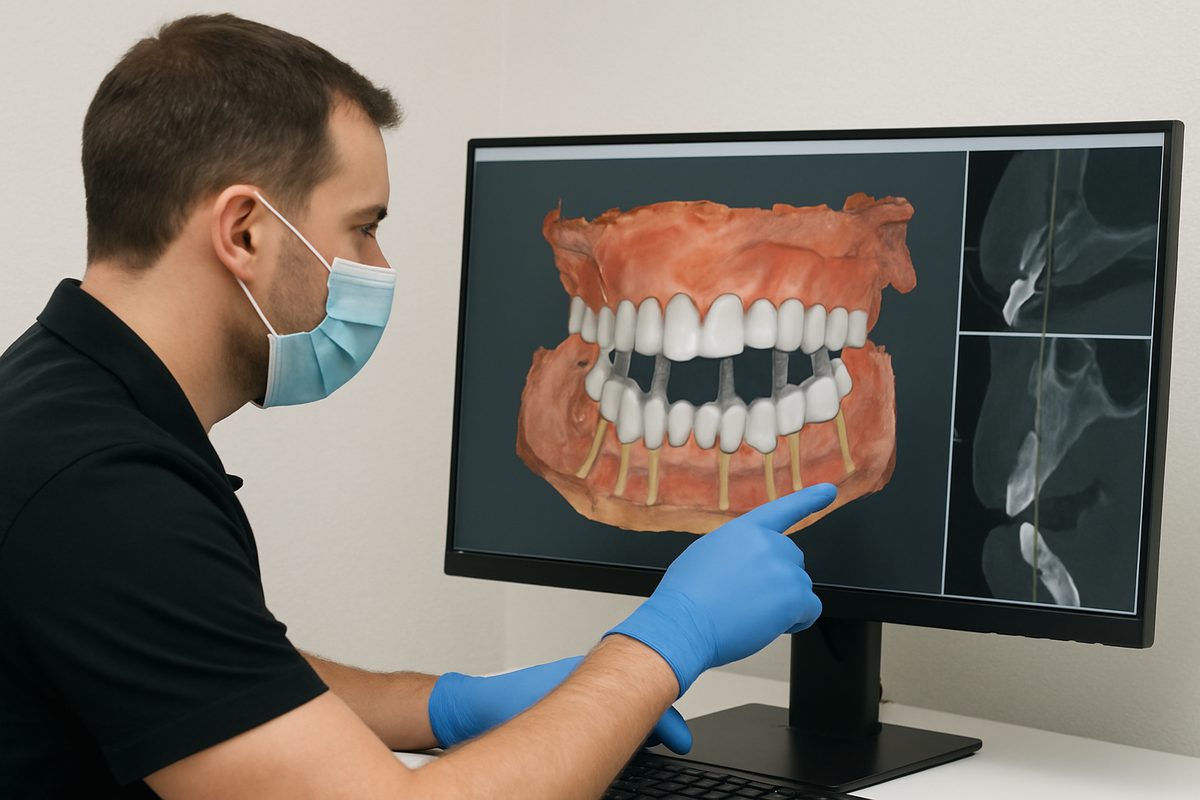Blog - [City], [state]
Tips, Facts, And The
Latest In Dentistry

Are Veneer Side Effects Worth The Smile? | Risks & Care
Posted in Cosmetic Dentistry
Posted on September 1, 2025 by Eric Chmiel

Veneer side effects are the possible problems people can get after porcelain or composite veneers are placed on their teeth. Patients often ask about risks because veneers change the tooth surface and need careful care. This post explains common veneer side effects, how long they usually last, how to manage them, and when to see a dentist.
If you’re searching for answers about veneer side effects in Oklahoma or wondering what to expect after a smile makeover, this guide gives clear, practical steps so you can decide with confidence.
Common veneer side effects — symptoms and causes
Tooth sensitivity
Tooth sensitivity after veneers happens when enamel is reduced or when bonding irritates the tooth nerve. Sensitivity is most common in the first days to weeks after treatment. Cold drinks, hot drinks, or air exposure can cause a sharp twinge. For many patients the sensitivity fades as the tooth settles and the bond cures.
Gum irritation or recession
Gum irritation or early recession can be caused by a poor veneer fit, overhanging edges, or aggressive brushing. Early signs include redness, soreness, and bleeding when you brush. If gums pull away from the veneer edge, food can get trapped and cause more irritation.
Chipping, cracking, or color mismatch
Veneers can chip or crack from grinding, biting very hard foods, or nail/pen chewing. Color mismatch may appear over time if surrounding natural teeth stain but the veneer does not, or if a temporary veneer is replaced by a slightly different permanent shade. Small chips are common and sometimes repairable; larger breaks usually need replacement.
Long-term risks: decay under veneers or bite changes
Poor oral hygiene or improper tooth preparation can allow decay to form under a veneer. Bite changes or improper fit can shift how your teeth meet, causing wear or jaw discomfort. These are more serious veneer side effects and often need professional correction.
How long do veneer side effects last — normal vs. concerning timelines
Typical short-term recovery
Most mild veneer side effects ease within a few days to a few weeks. Expect mild sensitivity and gum tenderness for up to two weeks. Small adjustments from your dentist, like polishing rough edges, often resolve minor discomfort quickly.
When side effects are a red flag
Call your dentist if you have persistent pain, swelling, worsening sensitivity after two weeks, or notice visible gaps, loose veneers, or dark spots at the edge of the veneer. These signs may indicate decay, poor fit, or infection and should be checked right away.
How to prevent and manage veneer side effects
At-home care and habits
- Brush twice daily with a soft brush and fluoride toothpaste.
- Floss gently at the gumline to prevent decay and gum irritation.
- Use desensitizing toothpaste if you have sensitivity.
- Avoid chewing ice, hard candies, or using teeth to open packages.
- Stop nail or pen biting and reduce acidic or staining foods if you have composite veneers.
Professional maintenance and fixes
See your dentist for regular checkups so they can spot early signs of veneer problems. Common fixes include re-polishing rough margins, re-cementing loose veneers, repairing small chips, or replacing veneers with recurrent issues. Treating decay or gum disease early prevents bigger problems under veneers.
Long-term maintenance plan
Ask your dentist about a long-term plan: routine exams, professional cleanings, and protective measures like a night guard if you grind your teeth. Monitoring bite changes and wear helps prevent future veneer side effects and extends the life of your restorations.
Finding trusted care for veneer side effects — Dental Arts of Oklahoma
For questions about veneer side effects in Tulsa, OK and surrounding areas, Dental Arts of Oklahoma offers experienced care across Catoosa, Tulsa, Bixby, Locust Grove, and Nowata. Dr. Soren Michaelsen leads a team focused on comfortable, technology-driven treatment and clear communication.
The practice uses tools that help prevent and diagnose veneer problems early, including CBCT and digital x-rays for precise imaging, intraoral cameras for close-up views, and Digital Smile Design to plan natural, well-fitting veneers. These technologies reduce the chance of poor fit and catch issues like gaps or decay early.
If you notice worrying symptoms or want a veneer check-up, schedule an evaluation. Expect a careful exam, imaging as needed, a review of how your veneers fit and contact points, and a clear plan—whether that’s at-home care advice, simple repairs, or replacement. Early attention keeps small veneer side effects from becoming major problems and protects your smile for years to come.




